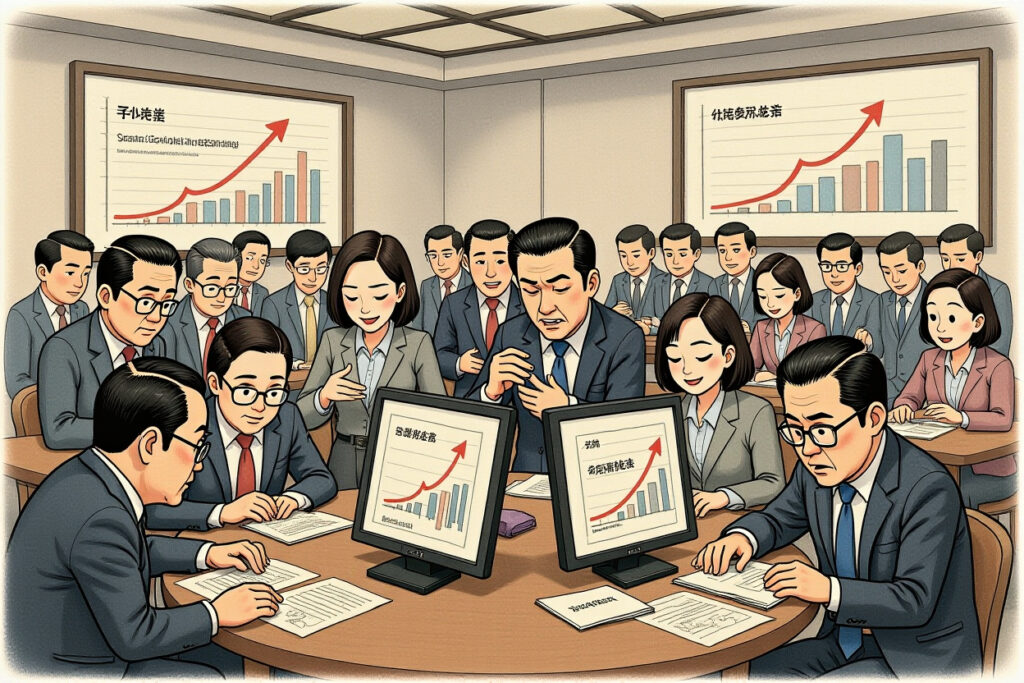Executive Summary
- China’s 5 trillion RMB market demonstrates explosive growth across technology, green energy and consumer sectors, driven by policy support and digital transformation
- Significant hidden risks emerge including regulatory tightening, debt exposure, and geopolitical tensions affecting market stability
- Corporate governance disparities and transparency issues create additional challenges for international investors
- Sector-specific opportunities remain in renewable energy, electric vehicles and domestic consumption themes
- Strategic positioning requires careful risk assessment and active regulatory monitoring for sustainable returns
China’s Economic Juggernaut Faces Critical Crossroads
The remarkable expansion of China’s 5 trillion RMB market represents both unprecedented opportunity and complex challenges for global investors. While headline growth figures capture attention, sophisticated market participants recognize that sustainable returns require navigating an increasingly complex landscape of regulatory shifts, geopolitical considerations, and structural economic transitions. The very factors driving this massive market expansion also contain seeds of potential disruption that demand careful analysis and strategic positioning.
International institutional investors particularly focus on how China’s dual circulation strategy and technological self-reliance initiatives create both protected markets and new competitive dynamics. The 5 trillion RMB market phenomenon isn’t monolithic—it represents convergence of multiple sectors including technology, green energy, and domestic consumption, each with distinct risk-reward profiles and regulatory considerations.
Market Drivers and Growth Fundamentals
Multiple structural factors underpin the massive expansion of China’s 5 trillion RMB market. Policy support through initiatives like Made in China 2025 and digital economy development guidelines have created powerful tailwinds. Demographic shifts toward urban consumption patterns and rising disposable incomes continue to fuel domestic market expansion.
Policy-Led Investment Acceleration
The Chinese government’s strategic focus on technological independence and green energy transition has directed substantial capital toward prioritized sectors. According to National Development and Reform Commission (国家发展和改革委员会) data, over 2.1 trillion RMB in direct policy support has flowed into semiconductor, renewable energy, and electric vehicle industries since 2021. This targeted investment creates both opportunities and market distortions that investors must carefully evaluate.
Consumer Market Evolution
China’s consumer market has transformed dramatically, with premiumization trends and digital adoption creating new growth vectors. The 5 trillion RMB market increasingly reflects sophisticated domestic demand rather than export-oriented manufacturing. E-commerce platforms like Alibaba Group (阿里巴巴集团) and JD.com (京东) report annual growth rates exceeding 15% in premium product categories, indicating fundamental demand strength.
Regulatory Environment and Compliance Challenges
The regulatory landscape represents both a stabilizing force and potential risk factor within China’s 5 trillion RMB market. Recent interventions across technology, education, and property sectors demonstrate authorities’ willingness to prioritize long-term stability over short-term growth, creating both disruption and opportunity.
Antitrust and Competition Policy
China’s State Administration for Market Regulation (国家市场监督管理总局) has dramatically increased antitrust enforcement, imposing significant fines on technology giants and reshaping competitive dynamics. These actions aim to reduce market concentration and encourage innovation, but also create uncertainty for investors in previously dominant platforms. The 5 trillion RMB market increasingly rewards compliance and regulatory alignment over pure growth metrics.
Financial Risk Management
Chinese regulators have intensified focus on systemic risk containment, particularly in property development and local government financing. The China Banking and Insurance Regulatory Commission (中国银行保险监督管理委员会) has implemented stricter capital requirements and exposure limits, affecting credit availability to certain sectors. This prudent approach supports market stability but may constrain growth in leveraged segments of the 5 trillion RMB market.
Sector-Specific Opportunities and Risks
Different segments within China’s 5 trillion RMB market present varying risk profiles and growth potential. Technology sectors face regulatory scrutiny but benefit from policy support, while consumer goods enjoy demand growth but face margin pressure from rising costs.
Technology and Innovation Leadership
China’s technology sector remains a cornerstone of the 5 trillion RMB market, with companies like Huawei (华为) and Tencent (腾讯) driving innovation. However, export controls and semiconductor restrictions create supply chain vulnerabilities. Investors must differentiate between companies with genuine technological advantages versus those dependent on imported components or technology.
Green Energy Transition
Renewable energy and electric vehicle sectors represent the most promising growth areas within China’s 5 trillion RMB market. Companies like CATL (宁德时代) and BYD (比亚迪) have achieved global leadership positions, supported by both domestic demand and export opportunities. Policy support remains strong, though capacity expansion risks creating oversupply in certain segments.
Investment Strategies for Navigating Market Complexity
Successful participation in China’s 5 trillion RMB market requires sophisticated approach to risk management and opportunity identification. Traditional growth investing approaches require modification to account for regulatory factors and geopolitical considerations.
Due Diligence Enhancements
Investors must deepen fundamental analysis to account for non-financial factors including regulatory compliance, environmental standards, and data security requirements. The 5 trillion RMB market rewards companies with strong governance and political alignment, factors that traditional financial analysis often overlooks.
Portfolio Construction Considerations
Diversification across sectors and market caps remains essential within China’s 5 trillion RMB market. Large-cap technology stocks offer liquidity but regulatory exposure, while small-cap innovators provide growth potential with higher volatility. Balanced exposure across state-owned enterprises, private champions, and emerging disruptors provides optimal risk-adjusted returns.
Future Outlook and Strategic Implications
The trajectory of China’s 5 trillion RMB market will significantly influence global capital flows and investment returns throughout the coming decade. While growth momentum remains strong, investors must prepare for increased volatility and structural shifts as China rebalances toward quality growth.
Technology independence initiatives and dual circulation strategy will continue reshaping market leadership within the 5 trillion RMB ecosystem. Companies aligned with national strategic priorities likely will receive policy support and market access advantages. However, geopolitical tensions may limit international expansion opportunities for certain sectors.
Environmental sustainability considerations increasingly affect investment returns within China’s 5 trillion RMB market. Carbon neutrality commitments create both compliance costs and new market opportunities, particularly in renewable energy and energy efficiency technologies. Investors must incorporate ESG factors into valuation models and investment decisions.
The evolution of China’s 5 trillion RMB market represents one of the most significant investment opportunities of our generation, but requires sophisticated understanding of both economic fundamentals and non-market factors. Successful investors will combine deep local knowledge with global perspective, maintaining flexibility to adapt to rapidly changing conditions.
Global institutional investors should consider increasing dedicated China allocation while implementing robust risk management frameworks. Partnering with local experts and maintaining active regulatory engagement will be essential for navigating the complexities of China’s 5 trillion RMB market. The time for cautious optimism and strategic positioning is now, before market maturation reduces return potential.




